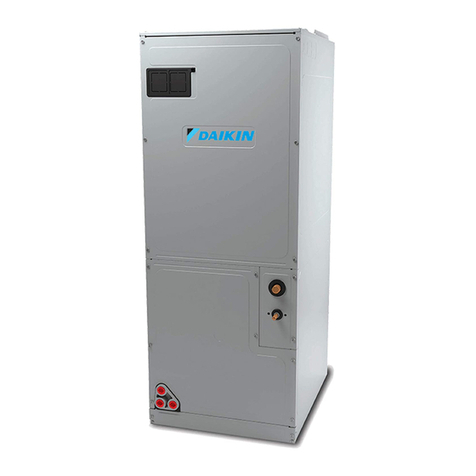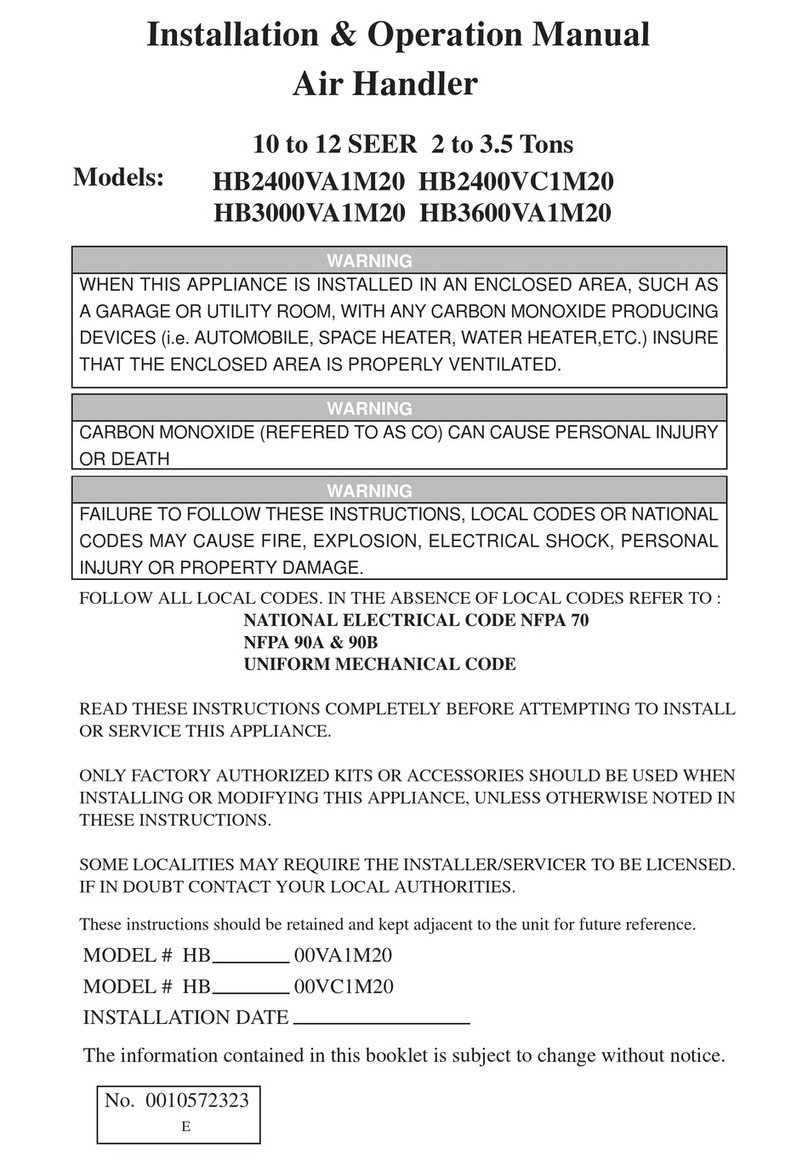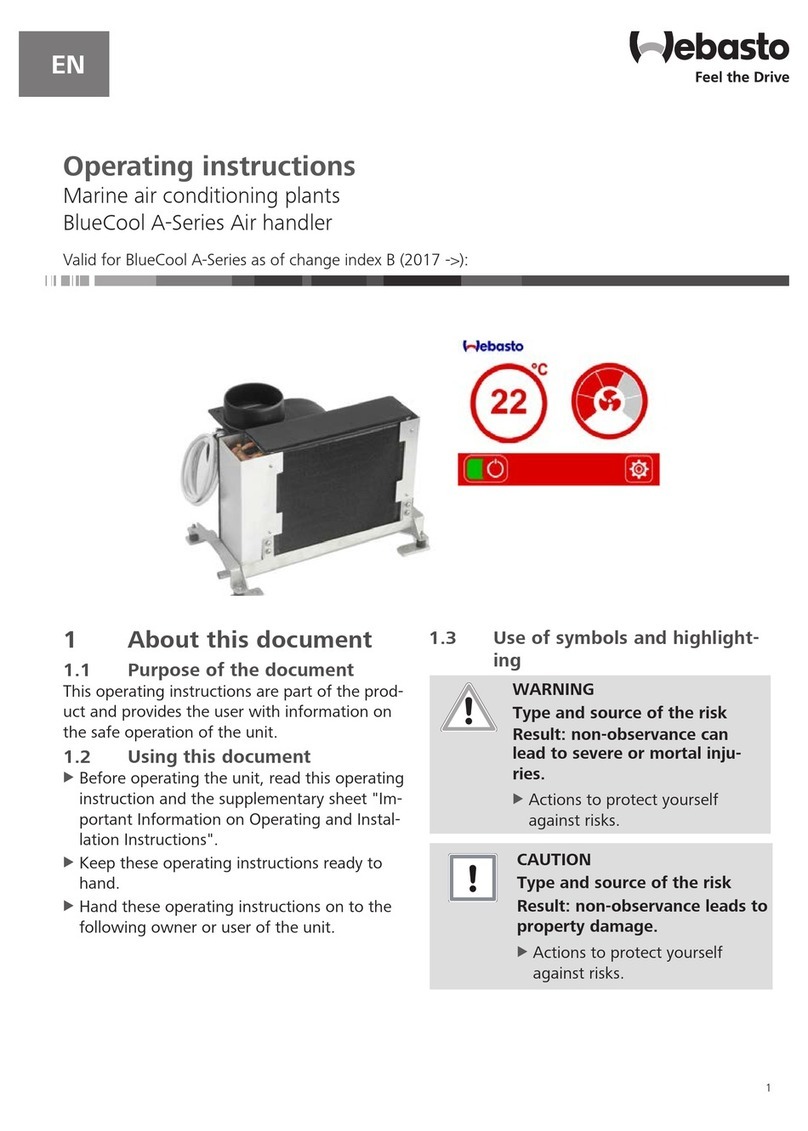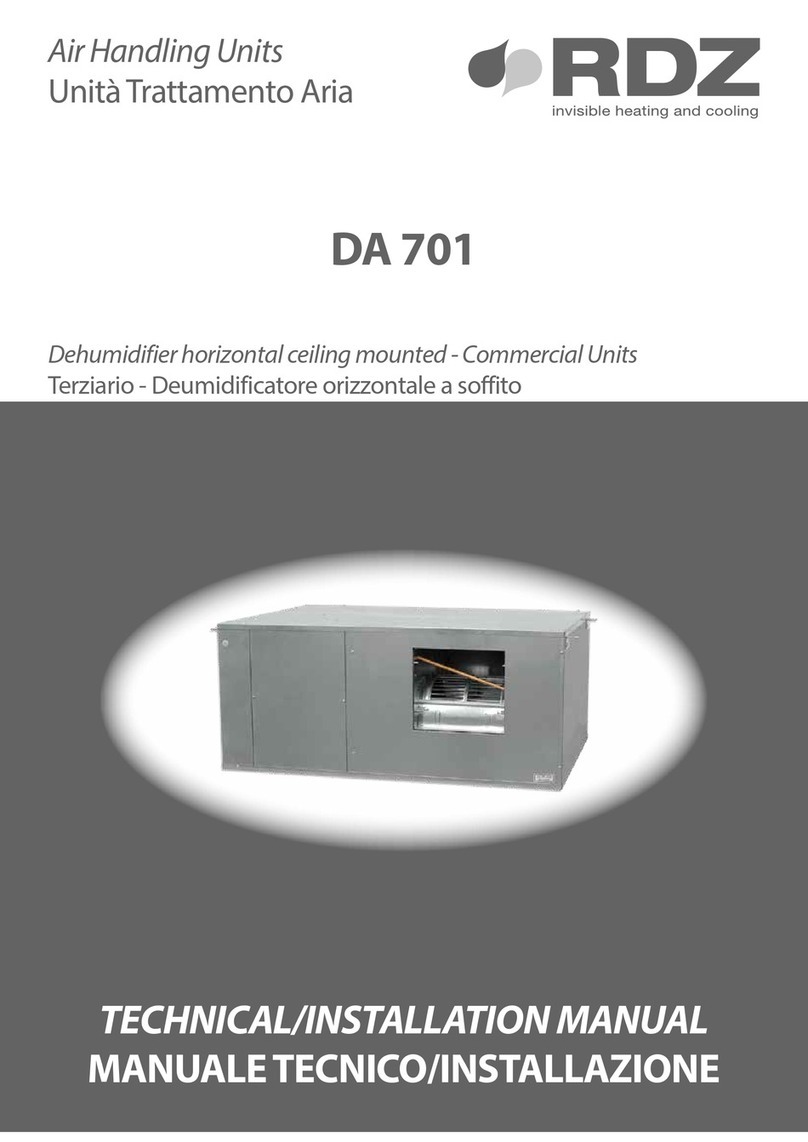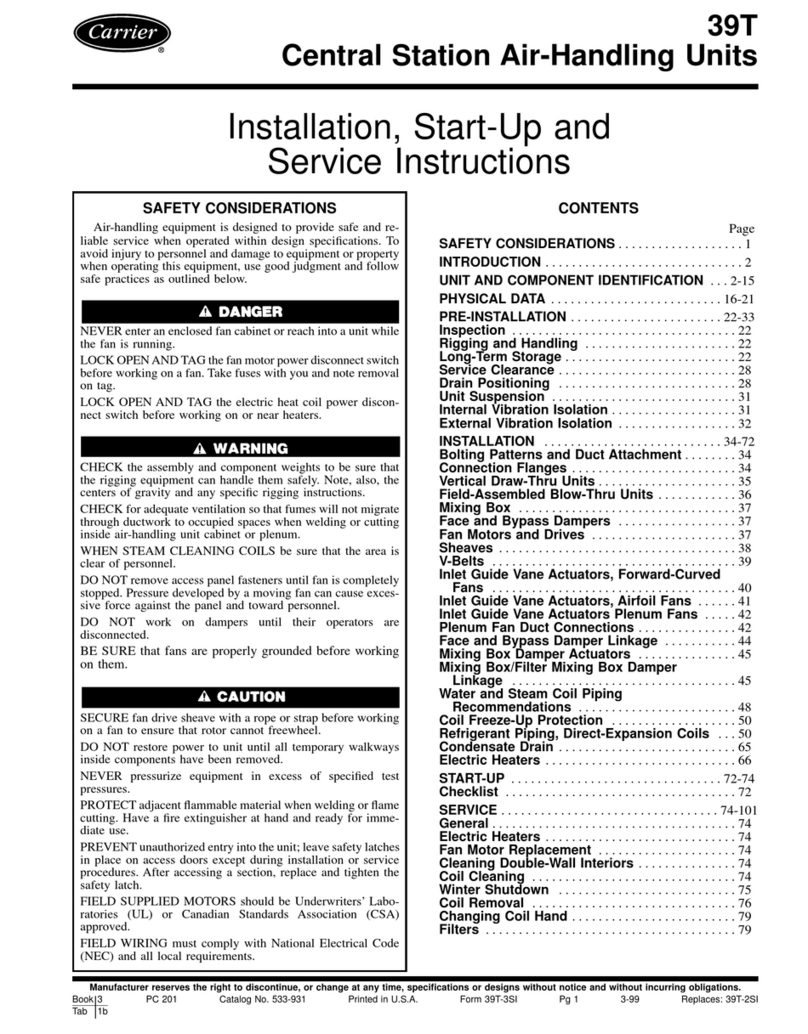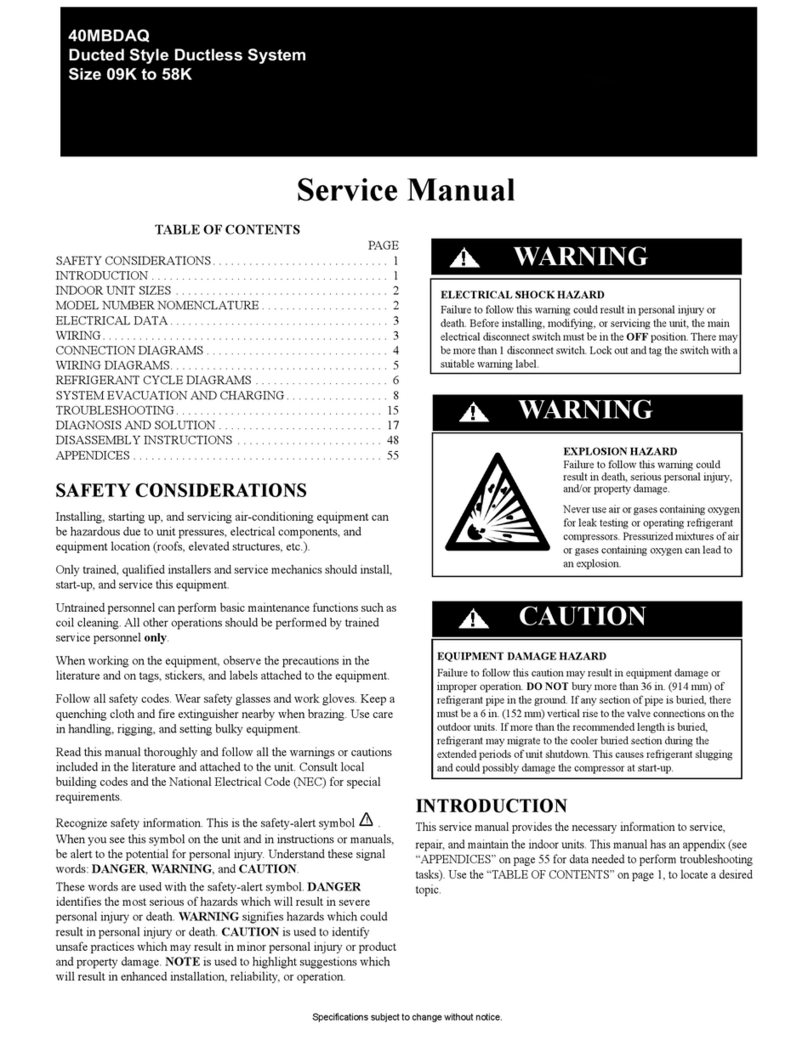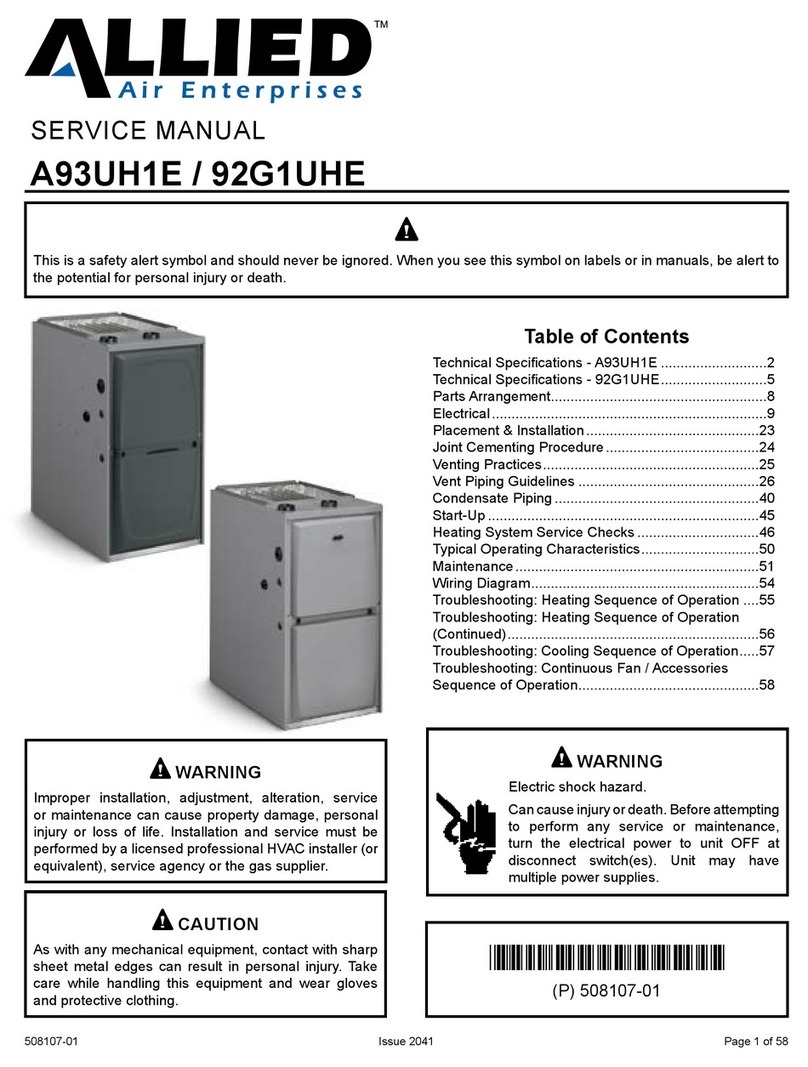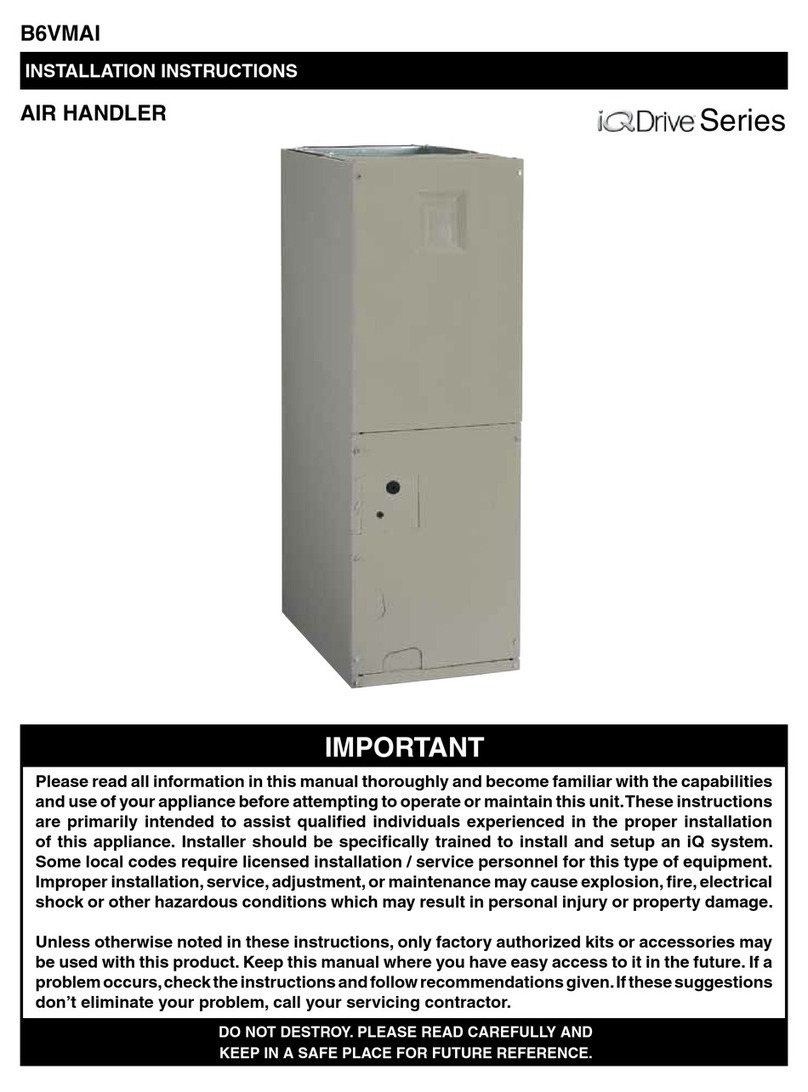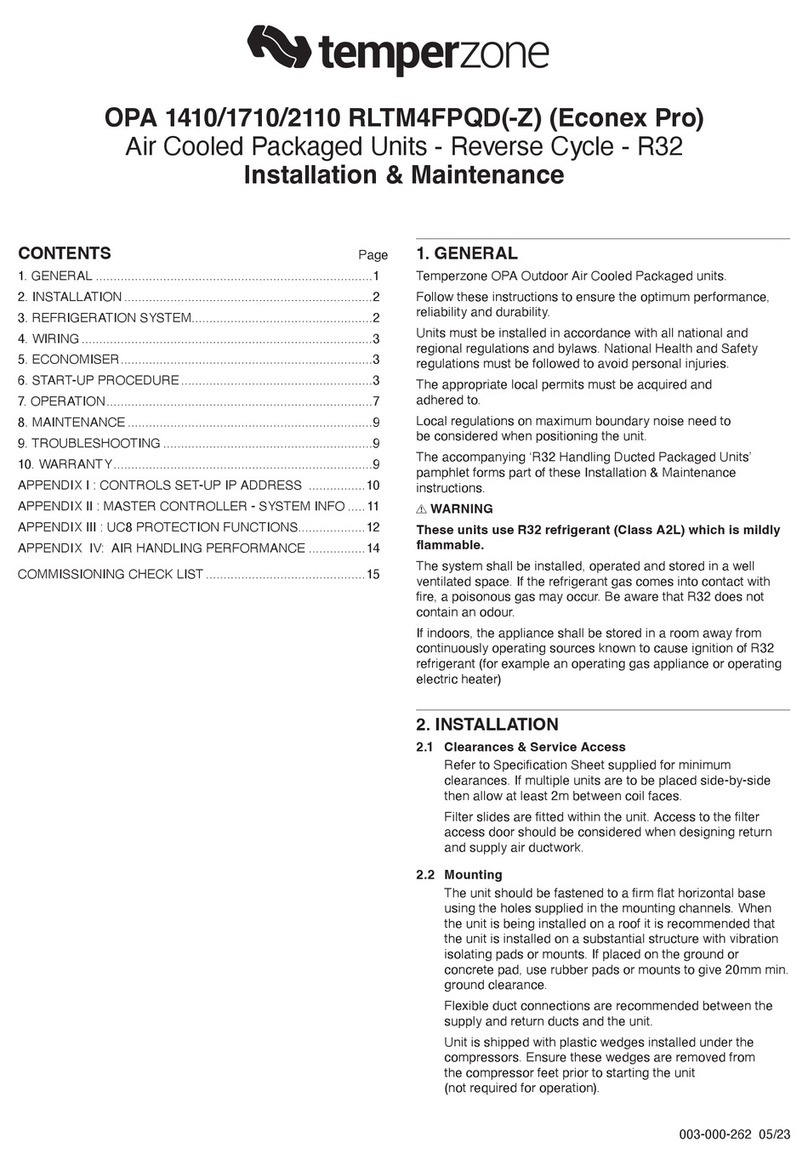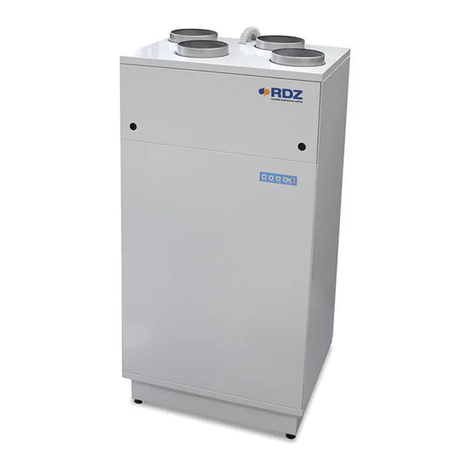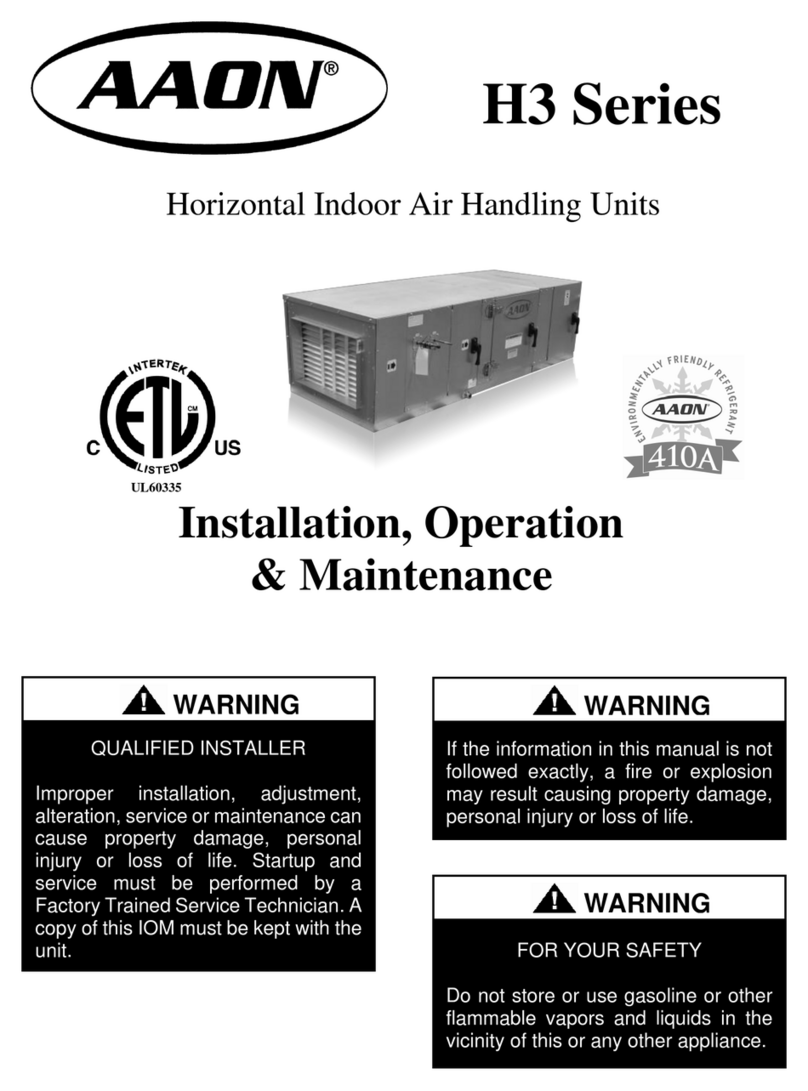
2McQuay IM 672-7
Introduction . . . . . . . . . . . . . . . . . . . . . . . . . . . . . . . . .3
General Information . . . . . . . . . . . . . . . . . . . . . . . . .3
Receiving and Handling . . . . . . . . . . . . . . . . . . . . . .3
Nomenclature . . . . . . . . . . . . . . . . . . . . . . . . . . . . . .3
Unit Storage . . . . . . . . . . . . . . . . . . . . . . . . . . . . . . .4
Mechanical Installation . . . . . . . . . . . . . . . . . . . . . . . .5
Service Clearances . . . . . . . . . . . . . . . . . . . . . . . . . .5
Rigging . . . . . . . . . . . . . . . . . . . . . . . . . . . . . . . . . . .5
Unit Leveling . . . . . . . . . . . . . . . . . . . . . . . . . . . . . . .6
Assembling Sections . . . . . . . . . . . . . . . . . . . . . . . . .6
External Section-to-Section Mounting . . . . . . . . . 6
Horizontal Airflow Section Mounting . . . . . . . . . . .6
Vertical Inverted Airflow Section Mounting . . . . . .7
Extended Coil Section Mounting . . . . . . . . . . . . . .8
Side-by-Side Heatwheel Section Joining . . . . . . .8
Internal Section-to-Section Mounting . . . . . . . . . .9
Ceiling Hung . . . . . . . . . . . . . . . . . . . . . . . . . . . .10
Panels, Frame Channels, and Doors. . . . . . . . . . . .11
Panel Removal . . . . . . . . . . . . . . . . . . . . . . . . . .11
Frame Channel Removal . . . . . . . . . . . . . . . . . .11
Fan Section Doors . . . . . . . . . . . . . . . . . . . . . . .11
Injected-Foam Insulated Panels . . . . . . . . . . . . .12
Field Mounting Junction Boxes and
Other Components . . . . . . . . . . . . . . . . . . . . . . . . .12
Face and Bypass Section Mounting . . . . . . . . . . . .12
Bypass Into a Vertical Fan Section . . . . . . . . . . .12
External Face and Bypass Duct Assembly
(Sizes 040 to 090) . . . . . . . . . . . . . . . . . . . . . . . .13
Multizone Assembly . . . . . . . . . . . . . . . . . . . . . . . .14
Multizone Damper Assembly . . . . . . . . . . . . . . .14
Duct Connections . . . . . . . . . . . . . . . . . . . . . . . . . .16
Multizone Damper Adjustment . . . . . . . . . . . . . .16
Multizone, Mixing Box and Economizer Damper
Torque Requirements . . . . . . . . . . . . . . . . . . . . .16
Mounting Actuators . . . . . . . . . . . . . . . . . . . . . . . . .17
Face Bypass Damper Torque Requirements . . .17
Piping and Coils . . . . . . . . . . . . . . . . . . . . . . . . . . .17
Water Cooling Coils . . . . . . . . . . . . . . . . . . . . . .17
Direct Expansion Coils . . . . . . . . . . . . . . . . . . . .17
Steam Coils . . . . . . . . . . . . . . . . . . . . . . . . . . . . .18
Water Heating Coils . . . . . . . . . . . . . . . . . . . . . .20
Drain Pan Traps . . . . . . . . . . . . . . . . . . . . . . . . . . .20
Internal Isolation Assembly Adjustment . . . . . . . . .20
Electrical Installation . . . . . . . . . . . . . . . . . . . . . . . . .22
Wiring . . . . . . . . . . . . . . . . . . . . . . . . . . . . . . . . . . .22
Control Wiring . . . . . . . . . . . . . . . . . . . . . . . . . . . . .22
Operation . . . . . . . . . . . . . . . . . . . . . . . . . . . . . . . . . 23
Startup Checks . . . . . . . . . . . . . . . . . . . . . . . . . . . 23
Before Starting the Unit . . . . . . . . . . . . . . . . . . . . . 23
Fan Startup . . . . . . . . . . . . . . . . . . . . . . . . . . . . . . 24
After 48 Hours of Operation . . . . . . . . . . . . . . . . . . 24
Fan Wheel Alignment . . . . . . . . . . . . . . . . . . . . . . . 24
Operating Limits . . . . . . . . . . . . . . . . . . . . . . . . . . . 26
Fan Vibration Levels . . . . . . . . . . . . . . . . . . . . . . . 28
Vibration Causes . . . . . . . . . . . . . . . . . . . . . . . . 28
Maintenance . . . . . . . . . . . . . . . . . . . . . . . . . . . . . . . 29
Periodic Maintenance . . . . . . . . . . . . . . . . . . . . . . 29
Ball Bearing Lubrication . . . . . . . . . . . . . . . . . . . . . 29
Motor Bearings . . . . . . . . . . . . . . . . . . . . . . . . . 29
Fan Shaft Bearings . . . . . . . . . . . . . . . . . . . . . . 29
Fan Drive Adjustments . . . . . . . . . . . . . . . . . . . . . . 30
VM/VP Variable Pitch Key Type Sheaves . . . . . 30
LVP Variable Speed Sheaves . . . . . . . . . . . . . . 31
MVP Variable Speed Sheaves . . . . . . . . . . . . . 32
Fan Drive Belt . . . . . . . . . . . . . . . . . . . . . . . . . . 33
Front Load Filter Option . . . . . . . . . . . . . . . . . . . . . 34
Filter Gauges . . . . . . . . . . . . . . . . . . . . . . . . . . . . . 34
Coils . . . . . . . . . . . . . . . . . . . . . . . . . . . . . . . . . . . . 34
Winterizing Water Coils . . . . . . . . . . . . . . . . . . . 35
Removing and Replacing Components . . . . . . . . . 35
Removing a Side or Top Panel . . . . . . . . . . . . . 35
Removing a Frame Channel . . . . . . . . . . . . . . . 35
Removing the Fan Section . . . . . . . . . . . . . . . . 35
Removing and Replacing the Coil . . . . . . . . . . . 35
Parts . . . . . . . . . . . . . . . . . . . . . . . . . . . . . . . . . . . . . 37
Replacement Parts . . . . . . . . . . . . . . . . . . . . . . . . 37
Service and Warranty Procedure . . . . . . . . . . . . . . 38
Warranty . . . . . . . . . . . . . . . . . . . . . . . . . . . . . . . . 38
Warranty Return Material Procedure . . . . . . . . . . . 38
Check, Test, and Start Procedure Form . . . . . . . . . 39
Quality Assurance Survey Report . . . . . . . . . . . . . 41





